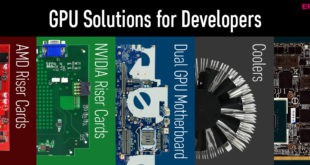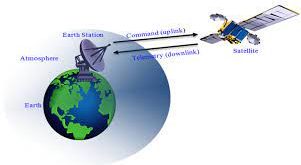Deep Neural networks (DNN) or large virtual networks of simple information-processing units, which are loosely modeled on the anatomy of the human brain have been responsible for many exciting advances in artificial intelligence in recent years. The deep learning (DL) algorithms allow high-level abstraction from the data, and this is helpful for …
Read More »DARPA ERI developing breakthrough U.S. national electronics capability for DOD missions to secure its national security
In 1965 R&D Director at Fairchild (and later Intel co-founder) Gordon Moore predicted continued systemic declines in cost and increase in performance of integrated circuits in his paper “Cramming more components onto integrated circuits.” These trends have underwritten the ongoing microelectronics revolution. “Moore’s Law has set the technology community on a …
Read More »RTCA DO-254 Airborne Electronic Hardware Standard
The growing demand for high-efficiency fighter aircraft, commercial airbuses and the ever-evolving Aerospace and Defense requirements are driving the demand for next-gen airborne electronics systems. Air transportation agencies and aviation OEMs across the globe have been striving to build next-generation Airborne electronics systems to make flying more reliable, predictable, and …
Read More »Electromagnetic Propulsion systems (EMP/EMPS) for Aerospace and Military
Electromagnetic propulsion (EMP) is the principle of accelerating an object by the utilization of a flowing electrical current and magnetic fields. The term electromagnetic propulsion (EMP) can be described by its individual components: electromagnetic – using electricity to create a magnetic field, and propulsion – the process of propelling something. …
Read More »Satellite Telemetry, tracking and command (TT&C) Subsystem is a crucial part of any space mission
Spacecraft are man-made machines that operate in space. An orbiting spacecraft is normally referred to as a satellite, although it is manmade as opposed to a natural satellite like our moon. A spacecraft is typically subdivided into two major parts, the payload and the bus. The bus provides the structural body …
Read More »Military cables including RF and Microwave Transmission lines
Transmission Line principles Transmission lines are means of transporting RF energy between subsystems. A simple wire lead does not work well for RF and microwave applications due to its large dimensions relative to a wavelength and losses due to the skin effect. To take into account the unique characteristics of …
Read More »MEMS Manufacturing
Mechanical-Systems (MEMS) is the integration of mechanical elements (levers, springs, deformable membranes, vibrating structures, etc.), sensors, actuators, and electronics (resistors, capacitors, inductors, etc.) on a common silicon substrate through microfabrication technology. MEMS devices are today considered as one among the most promising technologies of this century, capable to revolutionize the …
Read More »Embedded System Market
An “embedded system” is a word made by shortening “computer embedded system” meaning a system product or an electronic device into which a computer has been integrated. An embedded system is a controller that sits within a larger system in order to perform a dedicated function. An embedded system is …
Read More »Electric Vehicle Charging technologies and innovations
A typical passenger vehicle emits about 4.6 metric tons of carbon dioxide per year. This assumes the average gasoline vehicle on the road today has a fuel economy of about 22.0 miles per gallon and drives around 11,500 miles per year. Every gallon of gasoline burned creates about 8,887 grams …
Read More »Compound semiconductors for 5G, radar, electronic warfare, aviation, and satellite communication applications
Modern electronic products, from computers to smart phones, use silicon chips at their heart. As the name suggests, these chips are made from silicon, which is a highly abundant element found in sand. With a single element, it is possible to scale-up the manufacturing process to make highly complex silicon chips …
Read More » International Defense Security & Technology Your trusted Source for News, Research and Analysis
International Defense Security & Technology Your trusted Source for News, Research and Analysis


